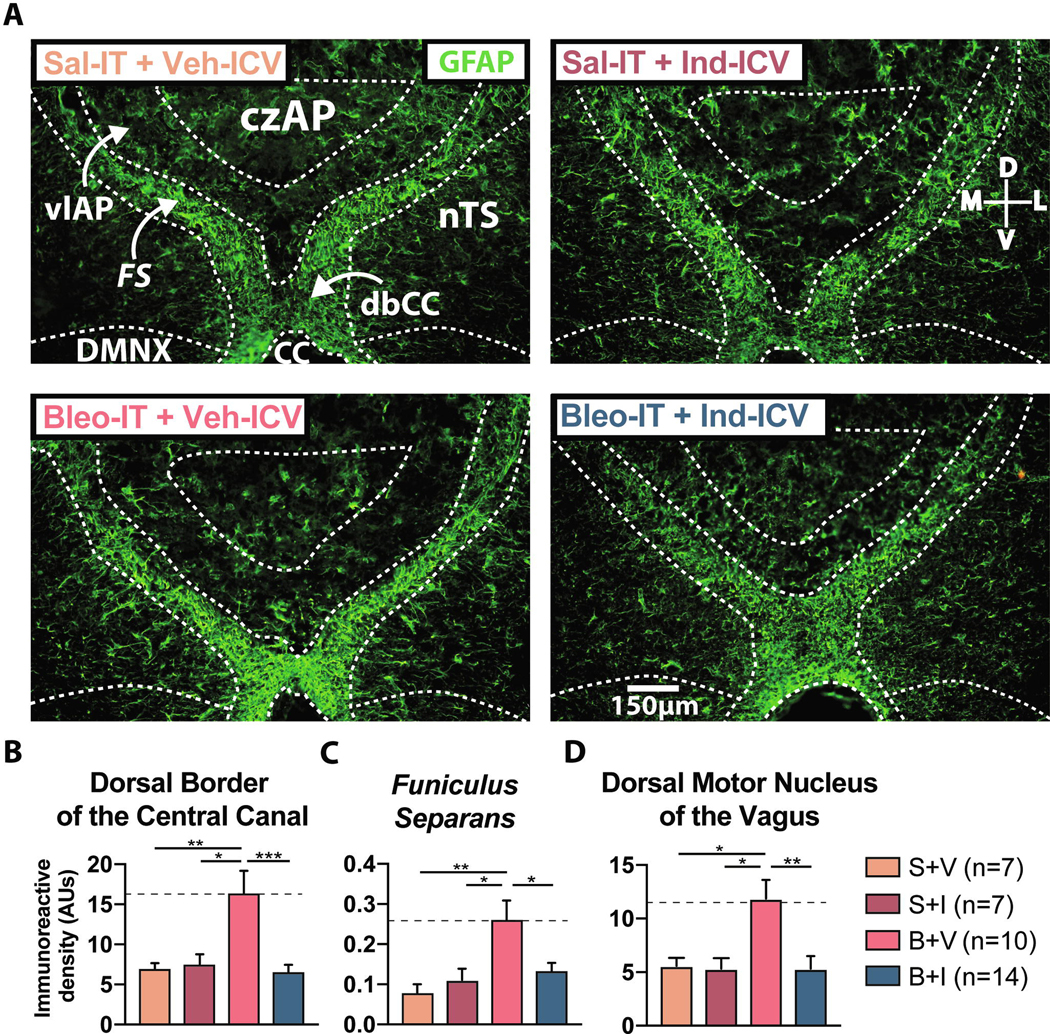Figure 6:
Chronic intracerebroventricular (ICV) Indomethacin (Ind) infusion prevents the SLI-dependent increase in GFAP immunoreactivity.
A. Representative images of coronal brainstem sections showing GFAP+ IR throughout the dorsal brainstem for rats treated with Sal-IT + Veh-ICV (S+V, n = 7, orange), Sal-IT + Ind-ICV (S+I, n = 7, magenta), Bleo-IT + Veh-ICV (B+V, n = 11, red), Bleo-IT + Ind-ICV (B+I, n = 14, blue).
B. GFAP+ IR was significantly increased in the dbCC of Bleo-IT + Veh-ICV treated rats compared to Sal-IT controls and was reduced in Bleo-IT + Ind-ICV treated rats (B+V vs. S+V: P = 0.0079; B+V vs. S + I: P = 0.014; B + V vs. B+I: P = 0.0005, One-way ANOVA with Tukey test).
C. GFAP+ IR in funiculus separans was augmented in Bleo-IT + Veh-ICV treated rats compared to Sal-IT controls and was significantly reduced in Bleo-IT + Ind-ICV treated rats (B+V vs. S+V: P = 0.0042; B+V vs. S+I: P = 0.02; B+V vs. B+I: P = 0.03, One-way ANOVA with Tukey test)
D. GFAP+ IR in the DMNX was augmented in Bleo-IT + Veh-ICV (B+V) treated rats compared to Sal-IT controls and was significantly reduced in Bleo-IT + Ind-ICV (B+I) treated rats (B+V vs. S+V: P = 0.026; B+V vs. S+I: P = 0.019; B+V vs. B+I: P = 0.003, One-way ANOVA with Tukey test).

